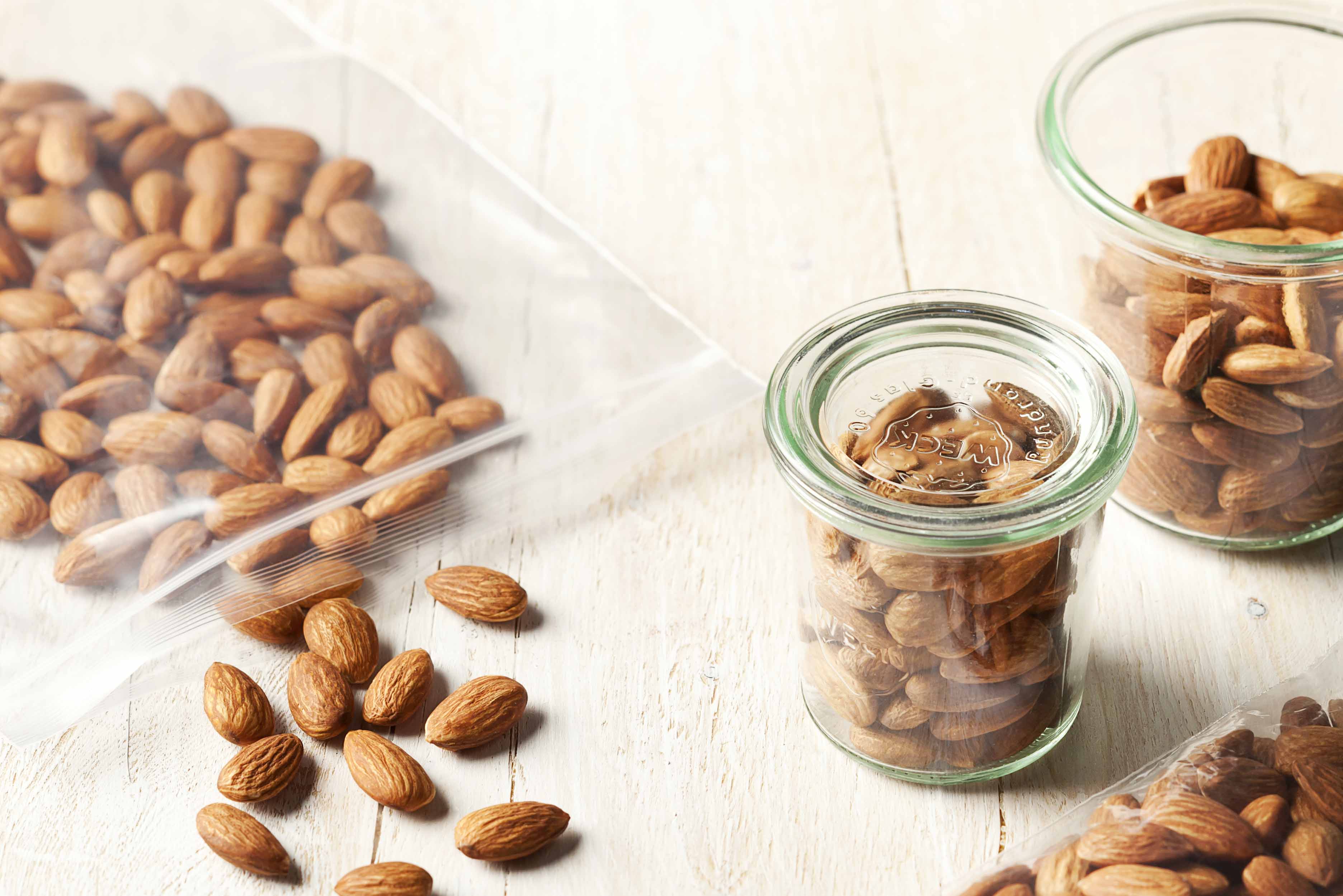Study at a Glance:
The Study
This study was an acute randomized crossover design involving two treatments comprised of 10% of energy from either raw almonds or sweet biscuits. Participants were randomly allocated to the intervention so that they received the two treatments in balanced order. There was at least a one-week washout between treatments which was expected to be sufficient for key outcomes to return to pre-intervention levels. 100 participants (75 women and 25 men; average BMI of 23.1 kg/m²) completed the study. The median age was 29 years with a range from 18 to 65 years.
On the test day, participants consumed a standardized breakfast. Two hours later, they consumed the assigned snack food. Blood glucose and appetite ratings were measured at baseline and at 15 or 30-minute intervals after consumption. Two hours after the snack, lunch was offered to participants, who ate as much or as little as desired and consumption was recorded. Participants also recorded food intake for the remainder of the day.
Results
The blood sugar response was lower after the almond snack than the biscuit snack. The mean (95% CI) difference in incremental blood glucose area under the curve was 53 mmol/L.min (p<0.001).
Appetite ratings did not differ between groups except for the appetite score at 90 minutes, which was lower for the biscuits compared to the almonds. The mean satiety quotient for hunger when using the Atwater factors for energy was statistically significantly lower for the almonds compared to biscuits (p=0.037). This difference was no longer statistically significant when digestible energy was used in the equation.
There were no differences in calories consumed at lunch between snack groups. However, those in the almond group reported consuming ~150 calories less (on average) over the course of the day compared to the biscuit snack group. There were no statistically significant differences in other nutrients, although there was a non-statistically significant tendency for lower absolute intakes of saturated fat (p=0.056) and sugar (p=0.053) in the almond treatment compared to the biscuit treatment.
Limitations
The study has a few limitations. The acute nature of the study provides useful information over the short term, but results will not necessarily translate into long-term behavior. Due to the different nutrient composition of the snack foods, energy density was not controlled. Monitoring blood glucose concentrations over longer periods may have been more informative since research has shown that whole almonds reduced glycemia acutely and the effects persisted after a second meal. Finally, the participants were of normal weight or overweight, so results can not be extrapolated to other populations.
Conclusion
Eating almonds as a mid-morning snack, instead of a usual biscuit snack with equal calories, improved participants’ post-snack blood sugar responses and reduced energy intake over the remainder of the day. Replacing less healthy snacks with almonds may help support weight management efforts and help maintain healthy blood glucose levels. More research is needed to determine longer-term effects of this intervention and on broader populations.

